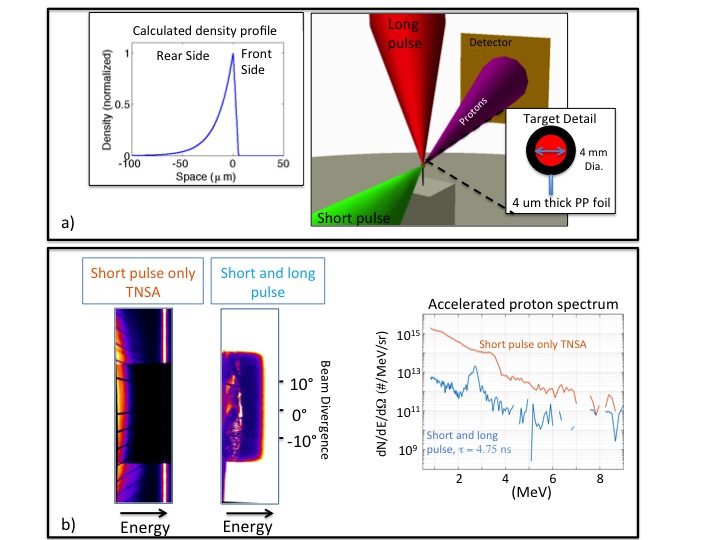Arthur Pak (15-LW-095)
Abstract
Collisionless shocks are pervasive in astrophysical environments and are known to be efficient cosmic-ray accelerators. However, the microphysics of shock formation and particle acceleration is not yet well understood. We have recently shown, through detailed first-principles simulations, that high-velocity collisionless shocks can be driven in the laboratory from intense laser interactions with plasmas, allowing in situ study of the physics of relativistic astrophysical shocks. By controlling both the laser and plasma parameters, it is possible to control the electromagnetic field properties of the shocks and, therefore, explore different acceleration mechanisms. We are studying the physics of collisionless shocks by driving high-velocity plasma flows in the laboratory with intense laser–plasma interactions. This will allow us to understand how the plasma conditions affect the shock structure, identify conditions for shock acceleration, and explore the generation of high-energy ion beams. We are studying both electrostatic and electromagnetic shocks with experiments at the Titan laser at Lawrence Livermore and the Linac Coherent Light Source at the SLAC National Accelerator Laboratory in Menlo Park, California. Our experimental efforts are continuously guided by high-fidelity simulations, performed with our state-of-the-art particle-in-cell code OSIRIS for modeling plasma-based accelerators, and leveraging our high-performance computing. Hydrodynamic simulations are performed using the radiation-hydrodynamics code HYDRA to predict the plasma profile obtained by the irradiation of a thin foil with a long pulse.
We expect to provide a fundamental understanding of the physics of collisionless shocks and cosmic-ray acceleration in astrophysical plasmas. We will fully characterize the shock structure in both electrostatic and electromagnetic regimes and study the acceleration of ion beams, optimizing their energy, quality, and flux as a function of laser and plasma parameters. We aim to identify the dominant shock formation and particle acceleration mechanisms in collisionless plasmas and demonstrate the generation of ion beams greater than 100 MeV per atomic mass unit with low energy spreads. Our efforts will potentially enable a compact ion source at LLNL with variable energy as high as tens to hundreds of megaelectronvolts and high flux. We will fully characterize and optimize this novel ion acceleration technique, and our results will open opportunities in a wide range of applications for national security and materials science, as well as radiotherapy.
Mission Relevance
This project will provide important insight into the physics of high-energy-density plasma in support of the Laboratory's core competency in high-energy-density science. In addition, it will allow for development of a unique compact ion source for research in fundamental science (plasma radiography), national security (material probing, active interrogation of nuclear materials, and injectors for conventional accelerators), and medical and biological applications (radiotherapy).
FY15 Accomplishments and Results
Our focus for FY15 was to first secure experimental time at an appropriate laser facility, and then to prepare for and execute our first experiments to explore the acceleration of ions from a laser-driven collisionless shock wave (see figure). Specifically, we (1) obtained approval for our experimental proposal at Livermore's Jupiter and the University of Rochester's OMEGA laser facilities, (2) conducted experiments in April and May of this year, (3) measured the energy spectrum of protons accelerated by the electrostatic collisionless shock wave; and (4) demonstrated that we can produce an ion beam with approximately 109 to 1010 particles more efficiently than previous acceleration mechanisms and with a narrower energy spectrum.






